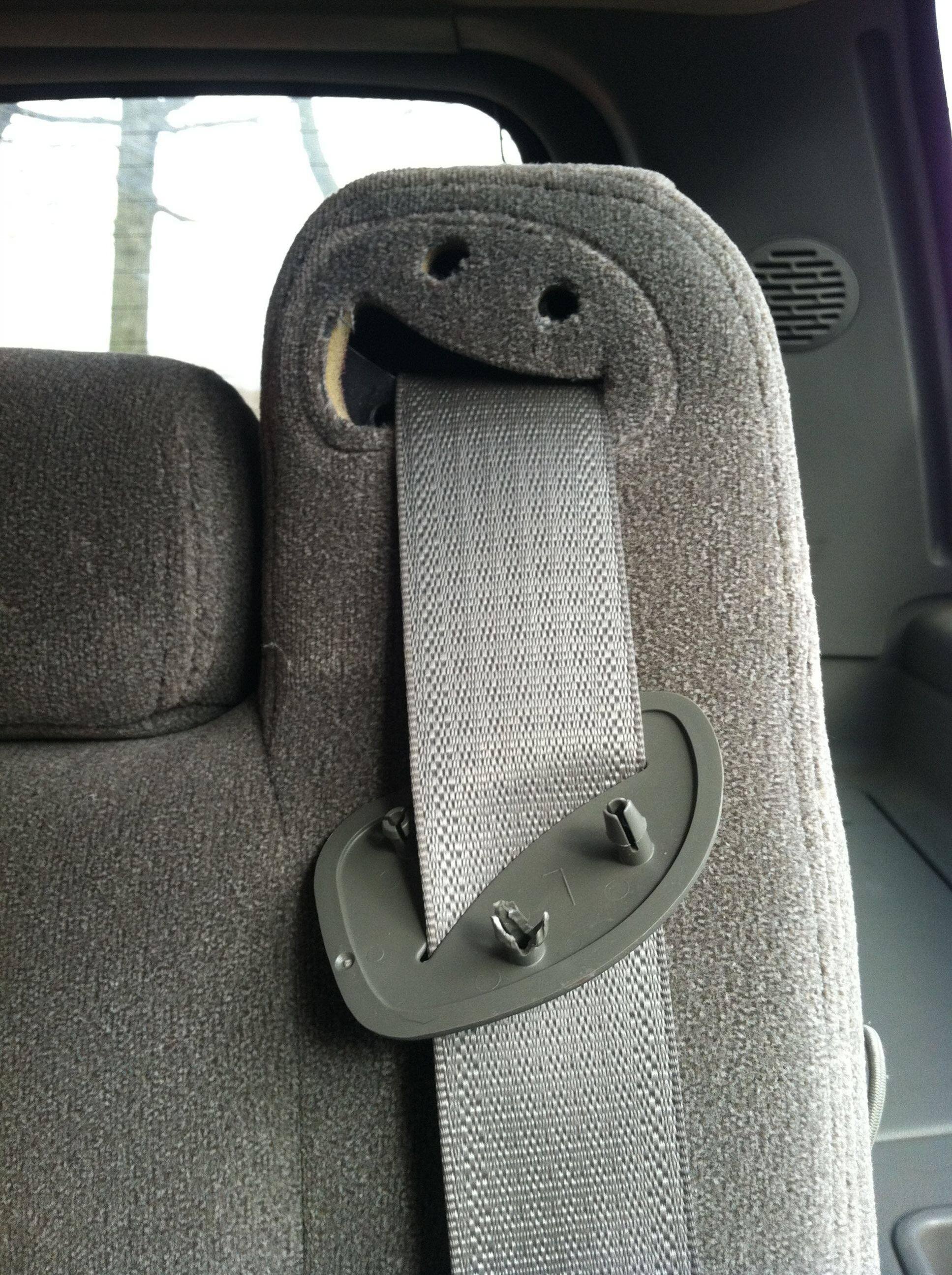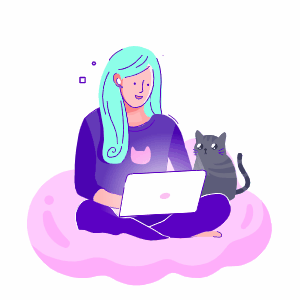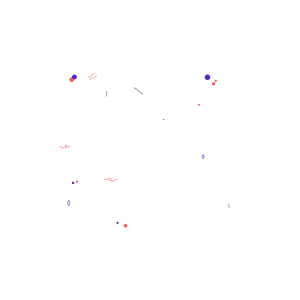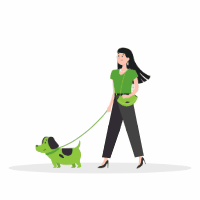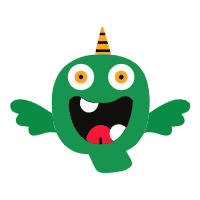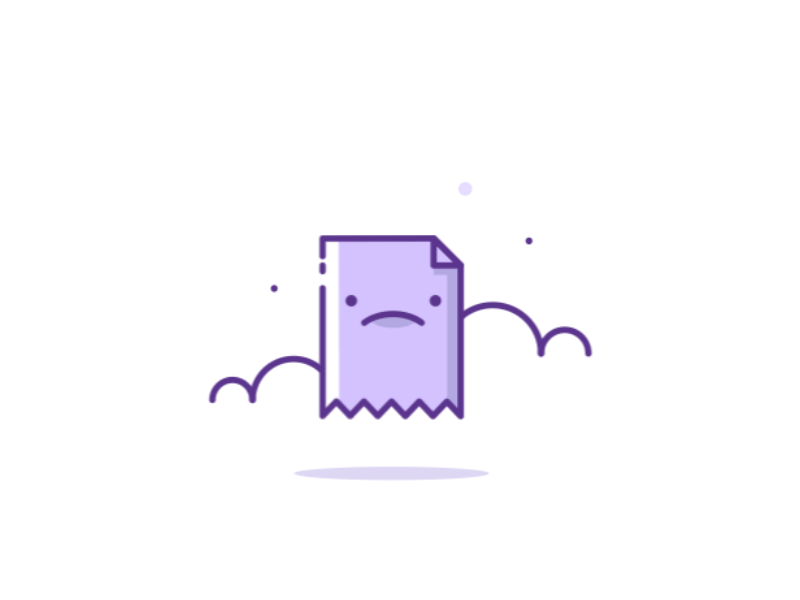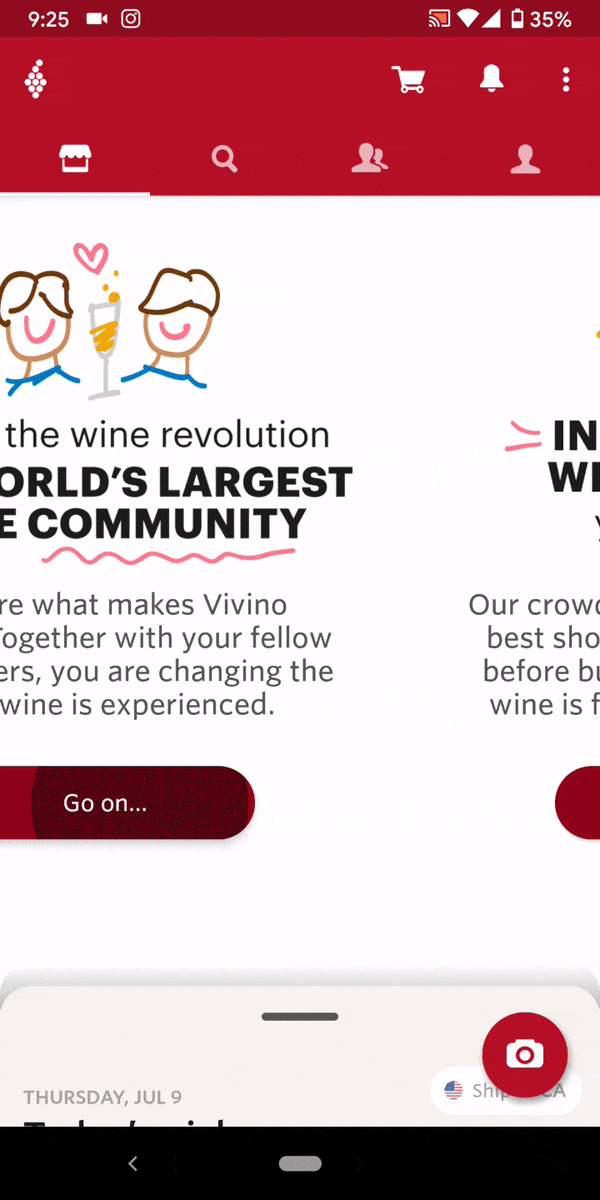Issue 2: Personality
Hey there! 👋
⬅️ Look at this photo. What words do you think of?
Derpy? Happy? Silly?
We love assigning traits to inanimate objects, like your favorite childhood toy, a pet rock, or… a seatbelt with the cover fallen off! 😉
But this trend isn’t just for household objects.
In 2000, researchers Clifford Nas & Youngme Moon published a research article introducing the CASA paradigm. Based on a series of experimental studies, the CASA paradigm demonstrated that people unconsciously assign human traits, such as gender and personality, to computers. 💻 These traits then influenced how much trust and confidence those same users had in the computer program. 🤯
A recent Nielsen Norman Group study on the impact on voice and personality on users found similar results. Specifically, it showed that the voice of a product had measurable impact on users and could influence the product’s trustworthiness and desirability.
In short, want to cultivate trust, confidence, and excitement about your product? Then give it some personality. 🤩
In This Issue
Learn about different ways to define personality for products and brands.
Examples on how to apply personality to products, featuring Vivino.
Articles & resources to inspire your learning journey.
Animations courtesy of Polina Strelchenko and Konrad Hylton
Let's Talk Personality
A quick primer on personality. 📖
Let’s talk about different types of personalities. For this, you’ll need to know about two concepts: Leary’s Interpersonal Complex and Jung’s Archetypes.
First up- Leary’s Interpersonal Complex
A mouthful, I know. 😬 It’s actually a pretty simple concept (see right) that measures personality along two dimensions: dominance (horizontal) & agreeableness (vertical).
Most products tend to lie on the right side of the diagram. Assistant-like products are portrayed as more submissive (bottom-right), while “inspirational coach”-type products map to the top-right.
Self-Check ✅
Consider your own personality and voice. Where do you sit on this diagram? 🤔
Now… think about the language and visual design of your favorite product. Where do you think it sits on this diagram? Is it similar to you?
Studies show that users have a slight preference for products that have similar personalities as themselves. Dominant personalities, for example, tend to prefer more dominant-sounding products. 💪
Think back to your own products and users. Ask yourself:
Is your product a servant or a coach? Where does that lie on the Leary Complex?
What personality does your product currently have? Does the personality match the purpose?
If no… what personality should you be shifting to?
Jung’s Archetypes 🌟
The second concept are the 12 classic brand archetypes, based on the work of psychologist, Carl Jung. For today, we’ll just review the 4 archetypes that are most often seen in products.
As you read, ask yourself: which archetype appeals the most to me? To my users?
Everyman
Approachable, down-to-earth, and loyal.
Just Like: IKEA, Philz Coffee
Animation courtesy of Insan M
Explorer
Chasing new experiences, discovery, and thrill!
Just Like: Postmates, Caviar, Libby
Animation courtesy of Tom Fabre
Jester
Celebrates joy through humor, mischief, and fun.
Just Like: Slack
Animation courtesy of Tam Doan
Sage
A thoughtful mentor bringing you deeper insights.
Just Like: Co-Star
Animation courtesy of Natalia Świerz
Personality in Products
Examples of how personality creates delight in digital experiences. 💞
Got the basics down? Cool, let’s talk about how personality shows up in an actual product!
In general, personality can be integrated into parts of the product that rely more heavily on words, images, and narration. This usually means:
Image courtesy of Tigran Manukyan
Launch Screen 🚀
Memorable products set their personality from the very first interaction, using visuals, animations, and language.
Image courtesy of Giphy
Acknowledgements 💬
Language, sounds, and animations that occur after a user takes action, making the product feel more like a two-way interaction between friends.
Image courtesy of Dany Arkan
Empty States 🗒️
Friendly nudges or celebratory messages often used to encourage users to create or modify content.
Vivino 🍷
Vivino is a wine rating and recommendation app for people looking to unlock their inner sommelier. In Leary’s Interpersonal Complex, Vivino lies in the servicing section, meaning that its personality is friendly 😊 and accommodating, meant to support you in meeting your needs. Like many discovery apps, Vivino uses words and images to exemplify the Explorer archetype- it’s about new experiences and variety! 🍇
Here’s how Vivino shows off its personality throughout the app.
Onboarding Screen
A playful invitation to discover the unknown.
Calling their app a “revolution”, Vivino’s onboarding screens emphasize the “more than 100,000 wines” available at your fingertips. The design uses confident reds to draw attention to each button and focuses on the variety of “styles” and “regions” for users. 🥂
Wine Search & Discovery
An immersive, photographic experience with a dizzying array of curation options.
Instead of a simple top bar, Vivino revamps search through use of inviting photos 📷 that remind users of the wine tasting experience. As you narrow your selection, Vivino invites you to curate your discovery through selection of style 🍷, taste 😛, country 🌎, and many other options. Photographs of each wine’s region of origin and of each bottle further bring explorers into an immersive, travel-like journey.
Curated Adventures
Movie-like posters that encourage you to explore new wines.
Vivino more explicitly caters to the Explorer archetype with its ✨ wine adventures ✨ feature. Clustered in themes, such as “Old World Wines”, “Wine Making” and “Champagne vs Prosecco”, Vivino transforms wine tasting into a series of quests, encouraging users to unlock new adventures whenever you’re feeling “ready to explore”! 🎊
Self Check ✅
Now that you’ve explored the world of wine, take a step back and think of a product or project you’re working on. How would you describe its personality? Does it have one?
If not, then I encourage you to think through the following questions:
What type of personality would appear most to my users?
How can that personality come through the language 🗣️ we use, visuals 🎨 we include, or the sounds 🔔 we employ?
With the dizzying amount of products we interact with every day, personality is one of the ways to transform a utilitarian experience into one that is personal, memorable, and delightful. 💖
Learning & Inspiration
Articles, online communities, and other resources to elevate your product skills.
Image courtesy of Studio Day Job
For folks new to personality archetypes,
JustCreative’s “Brand Archetypes” article is a great overview of where archetypes come from and why they matter, as well as detailed descriptions of all 12 archetypes and examples of memorable brands. 🙃
For product owners,
Identify your product’s personality by taking Kaye Putnam’s “Brandality Quiz”. This site also provides additional information about each archetype. Note that there is an optional step to provide your email address before viewing your results, but shhh, 🤫 you can skip it.
For PMs and product designers,
Kaja from Growbot describes, in detail, her step-by-step approach to defining a voice 🎤 for their product. From competitive research to workshopping and brand writing, this article is a great beginner-friendly guide for any product team looking to add some personality into their work!
For savvy designers looking to elevate their work,
This informative article describes how one design agency used different design components, from color 🖍️ to typography 🅰️, to create a cohesive product personality.
A Final Thought
When products have personalities, they can’t help but be memorable. Rather than sounding like a robot or a utility tool, products become more like trusted helpers, motivational coaches, or even silly friends.
In a world where social interaction is currently limited, I’d like to encourage us to create products with humanity.
Personalities are captivating and intoxicating- and with the right language, visuals, and interactions to spark the imagination, your products can be too.
Share the Love 💞
If you liked our second issue, here’s are two ways to keep your learning going:
Talk about this issue with a friend: Studies show that the best way to master an idea is to share and discuss it with others. Bonus points if you share this to your team at work to start talking product!
Subscribe to get issues straight to your inbox: Invest in your future self by making it really easy to follow along with new issues. It’s just one click to set it and forget it.
Finally, let’s keep the conversation flowing 💞
What did you think about this month’s topic? Is personality something that would make products more delightful to you?
If yes, what’s your favorite product? How would you describe its personality?
If no, let me know- what personalities do you not like in products?
I will personally reply to each & every thought, so comment below! ⤵️
